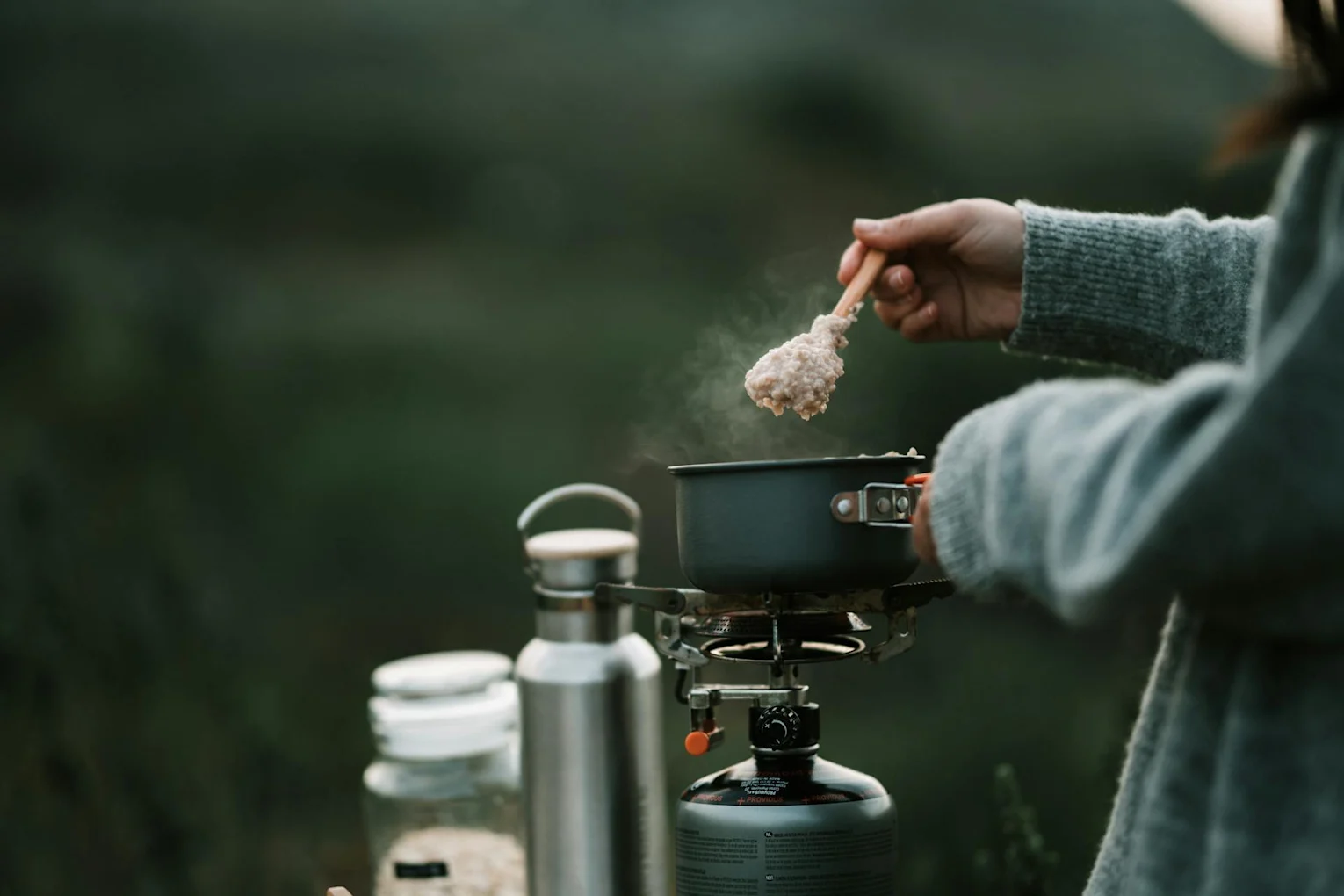Planning your backpacking meals isn’t just about staying full—it’s about fueling your adventure and creating a more enjoyable experience on the trail. The right food choices can make the difference between feeling energized and running out of steam halfway through a hike. That’s why it’s so important to approach meal planning thoughtfully.
Backpacking meals don’t have to be complicated or heavy, but they do need to be practical, nourishing, and easy to pack. This guide will walk you through every step of planning your trail meals, from choosing calorie-dense foods to avoiding common mistakes, so you can spend more time enjoying the great outdoors.
How to Plan Meals for a Backpacking Trip
Start with the Basics: How Much Food Do You Need?
Backpacking burns a lot of energy, which means you’ll need more calories than usual—between 2,500 and 4,000 calories per day, depending on your activity level. Focus on calorie-dense foods like nuts, seeds, and oils that provide a lot of energy without taking up much space or weight in your pack.
Keep It Simple: Easy Meals for the Trail
Complex recipes have their place, but backpacking isn’t it. Stick to meals that are quick to prepare or require minimal cooking, like instant oatmeal for breakfast or cook-in-bag dinners. One-pot meals are ideal since they minimize both cooking time and cleanup, leaving you more time to relax after a long day.
Plan for Variety: Breakfast, Lunch, Dinner, and Snacks
It’s tempting to rely on energy bars and trail mix, but eating the same thing all day can lead to "taste fatigue." Instead, plan a variety of meals and snacks that provide different flavors and textures. For instance:
Breakfast: Instant oatmeal with freeze-dried fruit or a protein shake.
Lunch: Tortilla wraps with peanut butter or hummus.
Dinner: Ramen with dehydrated veggies and a pouch of chicken.
Snacks: Trail mix, jerky, and gummies for quick energy boosts.
What Makes a Great Backpacking Food?
The best backpacking foods are lightweight, calorie-dense, and easy to prepare. Here are the qualities to look for:
High-Calorie, Nutrient-Dense: Think nuts, seeds, dried fruits, and oils. These pack a lot of energy into a small space.
Lightweight: Dehydrated and freeze-dried foods are lifesavers for keeping your pack manageable.
Long Shelf Life: Stick to items that won’t spoil easily, like jerky, energy bars, and powdered milk.
Quick to Prepare: Instant meals or no-cook options save time and effort, especially after a tiring day.
Best Types of Backpacking Foods
Breakfast Ideas
Start your day with easy-to-make options that provide lasting energy:
Instant oatmeal or granola with powdered milk.
Dehydrated scrambled eggs or smoothie powders.
Freeze-dried fruit for added flavor and nutrients.
Lunch Ideas
Lunches on the trail should be quick, filling, and require little to no cooking:
Tortillas filled with peanut butter, Nutella, or hummus.
Packaged tuna or chicken paired with crackers.
Hard cheese, paired with trail mix or dried fruit.
Dinner Ideas
A warm dinner can be the highlight of your day on the trail:
Freeze-dried meals from brands like Mountain House.
Ramen noodles with added protein and veggies.
Instant rice or mashed potatoes with soup packets or powdered cheese.
Snacks & Energy Boosters
Snacks are essential for keeping your energy up throughout the day:
DIY trail mix with nuts, seeds, and dried fruit.
Protein or granola bars for a quick calorie boost.
Electrolyte powders to stay hydrated and energized.
Food Storage and Packing Tips
Pack Smart: How to Organize Your Food
When packing your food bag, organization is key. Group meals together in resealable bags and keep snacks easily accessible at the top. This not only saves space but also makes it easier to grab what you need during the day.
Bear-Proof Your Food
If you’re hiking in bear country, food safety is a top priority. Use bear canisters or hang your food in a bear bag at least 200 feet from your campsite to keep it safe from curious wildlife.
Cooking Tips for the Trail
One-Pot Wonders
Cooking on the trail doesn’t have to be a chore. One-pot meals save time, fuel, and cleanup. Simple combinations like instant rice with dehydrated curry or ramen with tuna are flavorful, filling, and easy to make.
Cold-Soaking: A Stove-Free Option
For hikers looking to lighten their load, cold-soaking meals is a great alternative to cooking. Soaking instant oats or couscous in cold water allows them to "cook" without the need for a stove.
Common Mistakes to Avoid
Overpacking Food: It’s tempting to bring extra, but carrying too much food adds unnecessary weight. Plan carefully to avoid this mistake.
Relying Only on Energy Bars: Variety is important to keep meals interesting and enjoyable.
Forgetting Cooking Supplies: Double-check your gear list to ensure you have essentials like a stove, fuel, and utensils.
Conclusion
Meal planning for backpacking is about more than just eating—it’s about fueling your adventure, staying energized, and enjoying the trail. With the right preparation and food choices, you can make your outdoor experience even more rewarding.
